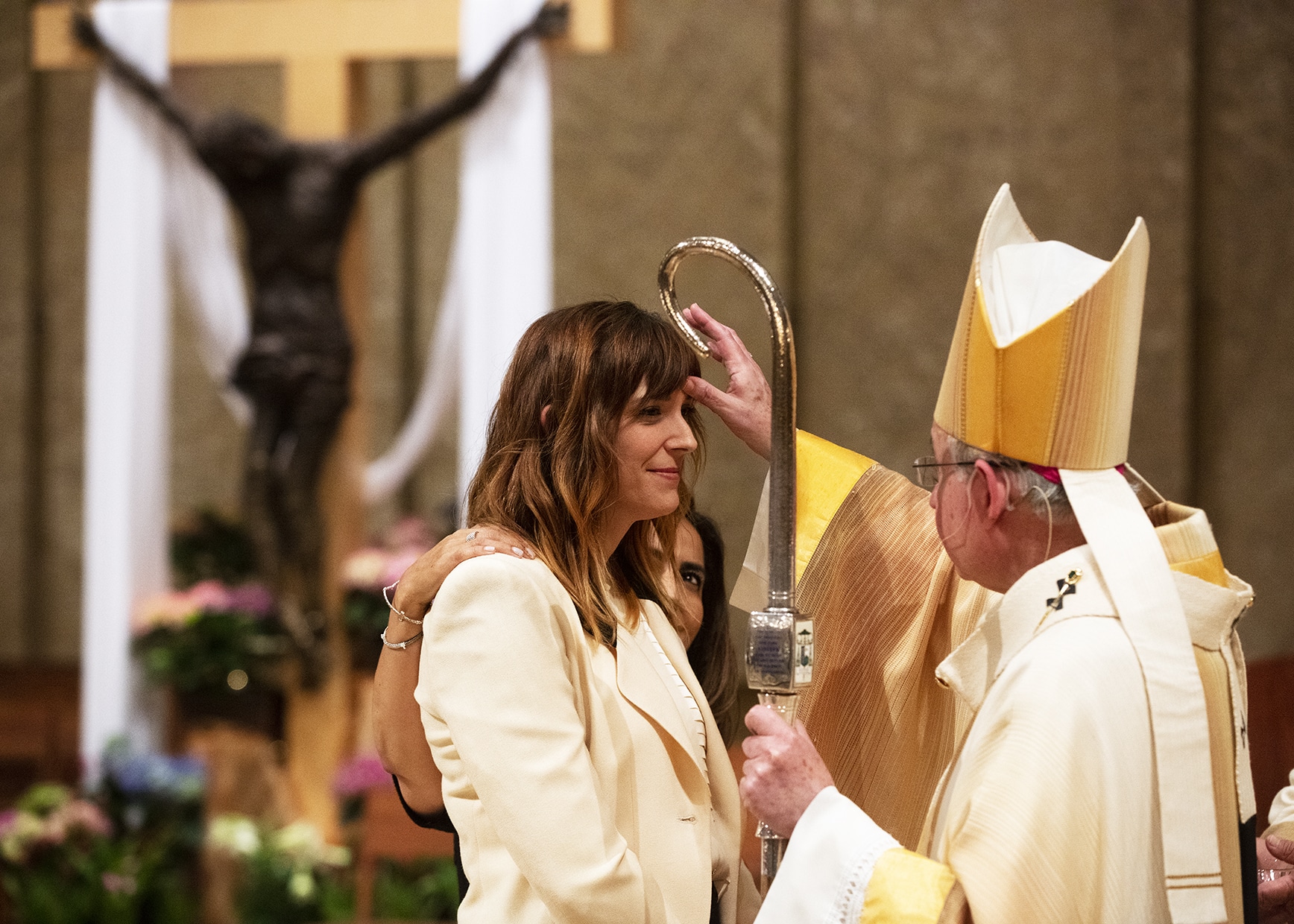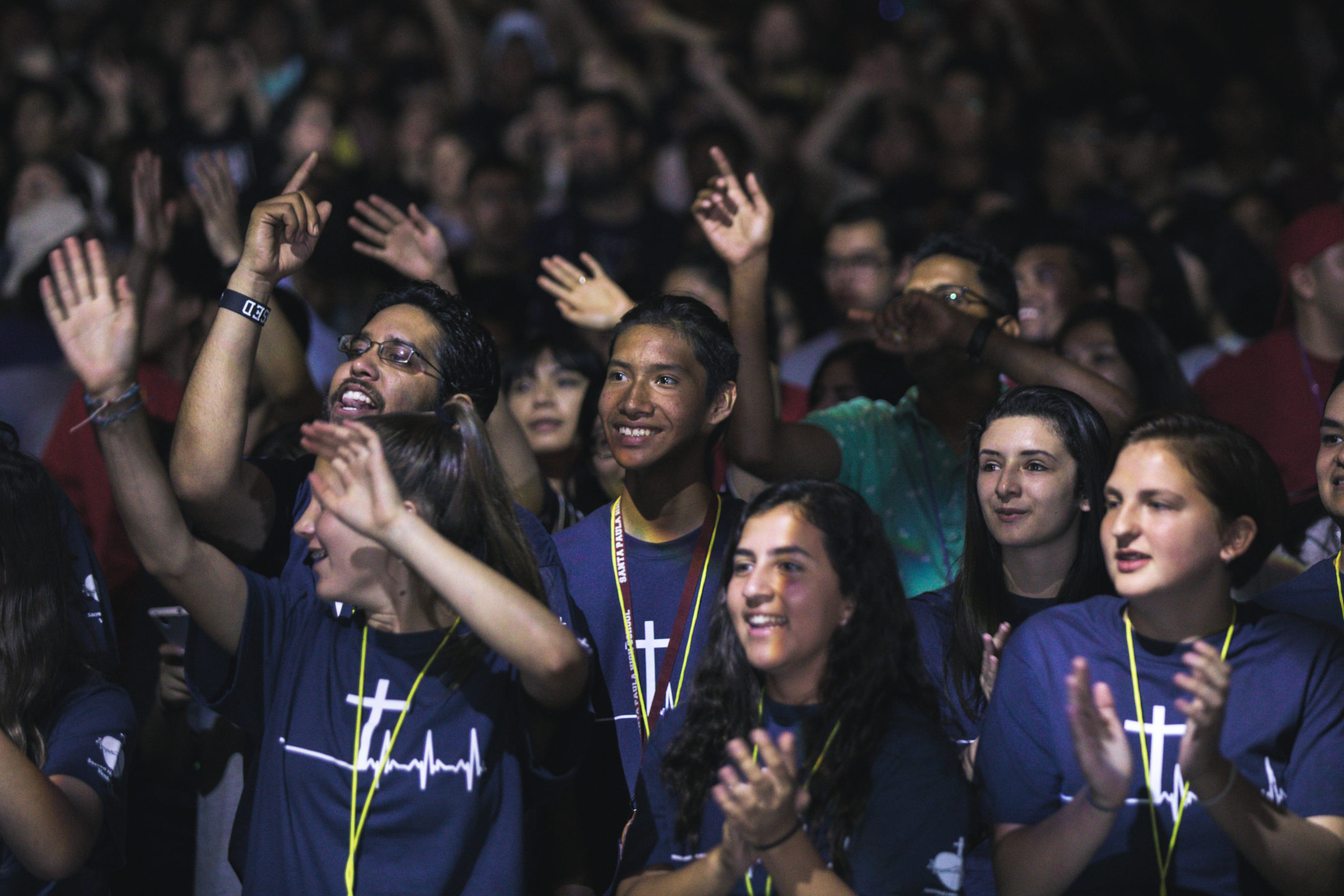A person is said to be fully initiated in the Catholic Church when s/he has received the three sacraments of Christian initiation, Baptism, Confirmation and Eucharist. This is achieved through a process of preparation.
The Catholic Church rejoices every time a person decides to undertake the process to become a Catholic. We welcome you and we are here to help answer all those questions that might result from the call that God is inviting you to follow. Becoming a Catholic is one of life’s deepest and most joyful experiences. Some, thanks to the faith of our parents, have received baptism as children and along the way we discover the God of our parents. Others, that might be your case, become Catholics when they are older children or adults.
A person is said to be fully initiated in the Catholic Church when s/he has received the three sacraments of Christian initiation, Baptism, Confirmation and Eucharist. This is achieved through a process of preparation.
The usual practice is that a family will bring the baby to the Church for baptism. From that moment the baby is already Catholic the child later enters religious formation and celebrates confirmation and communion where s/he deepens her/ his faith.
An adult or child of catechetical age who is not baptized enters the Christian Initiation process and through a process of liturgy, catechesis, and formation is prepared to celebrate the three sacraments of Initiation.
There are also others who have been validly baptized in different Christian denominations that are accepted in the Catholic Church by making a profession of faith at a mass to be formally received in the Church. After this followed immediately by confirmation and the Eucharist.
For adults and children who have reached the age of reason, entry into the Church is governed by the Rite of Christian Initiation for Adults.
Steps to become Catholic for the unbaptized person
The first step is to find the parish closest to your locality and share your interest in becoming catholic.
Preparation for the reception of the Church begins with the stage of searching in which the unbaptized person begins to learn about the Catholic faith and decide whether to embrace it.
The first formal step in becoming Catholic begins with the rite of reception in the order of the catechumenate, in which the unbaptized express their desire to become Christians. Catechumen is a term that early Christians used to refer to those who prepared to be baptized and become Christians.
The period of catechumenate lasts depending on how ready the person is ready in his knowledge and conscience to continue with the next step of converting to Christ.
The purpose of the catechumen is to provide the catechumens with a complete formation of Christian teaching. “During the Catechumenate period” (U.S. Conference of Bishops, National Statutes for the Catechumenate, 11 November 1986) a comprehensive catechesis on the truths of Catholic moral doctrine and life will be provided with the help of approved catechetical texts.” The catechumenate also aims to give catechumens the opportunity to reflect and become firmly their desire to become Catholics.
The second formal step is given with the rite of Election, in which the names of the catechumens are written in a book of those who will receive the sacraments of initiation. In the rite of election, the catechumens again express the desire and intention to become Christian, and the Church judges that the catechumen is ready to take this step. Normally, the rite of Election occurs on the first Sunday of Lent, the beginning of the period of forty days of preparation for Easter.
After the rite of Election, candidates go through a period of more intense reflection, purification, and enlightenment, in which they deepen their commitment to repentance and conversion. During this period, the catechumens, now known as the Elect (chosen ones), participate in several additional rituals.
The three main rituals, known as scrutiny, are normally held at Mass on the third, fourth and fifth Sundays of Lent. Scrutiny is a rite for self-examination and repentance. They are destined to take the qualities of the soul of the catechumen, to heal those qualities that are weak or sinful, and to strengthen those that are positive and good.
During this period, the chosen ones are formally presented with the Apostles’ Creed and the Lord’s Prayer, which are to be committed to memory.
Initiation itself usually occurs at the Easter Vigil, the night before Easter Day. That afternoon a special mass is celebrated in which the chosen ones are baptized, then confirmed and finally receive the Holy Eucharist. At this point, they become neophytes (babies in the faith).
Ideally, the bishop oversees the service of the Easter Vigil and confers confirmation on the chosen ones, but often, due to the great distances or the number of people, a local parish priest will perform the rites.
The final stage of Christian Initiation is known as mystagogy, in which new Christians are strengthened in the faith through further instruction deepening of the relationship with the local Catholic community. The period of mystagogy usually lasts throughout the Easter season.
During the first year of his life as Christians, those who have been Initiated are known as neophytes or “new Christians”.
If at the end of this reading you still have questions do not hesitate to contact the Liturgy office with Leticia Perez at 213-637-7595 or LPerez@la-archdiocese.org



